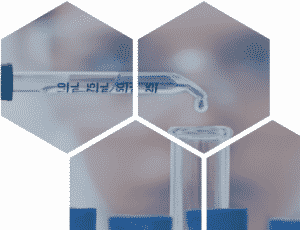Driving Toward the Drug-Free Cab
For one trucking firm, required DOT drug testing with urine did not ensure the drug-free cabs they wanted. As a result, they decided to augment that testing with a more stringent Psychemedics drug test using hair. The results literally speak for themselves.
KLLM has transported perishable commodities throughout the country for 50 years. Although initially a truck brokerage, the company established its own fleet in 1967. As a result, the company is among the top three refrigerated carriers. It offers daily OTR, Regional and Dedicated services to a major portion of 48 states and Mexico. KLLM serves the needs of both dry freight customers and those that require temperature-controlled services.
“A drug-free cab starts with better hiring.”
As a member of the Trucking Alliance, whose mission is to advance safety reforms that can achieve zero large truck crash fatalities, KLLM recognizes that a drug-free fleet is a safer fleet. The company also recognizes that hiring drug-free is the first step toward a drug-free fleet.
Operating 3,000 trucks, the company balances the constant need to recruit and train new drivers with an unwavering commitment to public safety. KLLM executives heard from other Alliance members that urine tests missed 9 out of 10 users identified by a hair test.
The objective? A drug-free fleet.
As a result of drivers slipping past the DOT drug test, the company added Psychemedics to their hiring process with several objectives in mind.
- Improve the quality of their driver team
- Reduce their exposure to incidents and associated claims
- Reinforce customer relationships by visibly pursuing a drug-free cab
- Recover wasted recruiting time and money on undesirable applicants
Extending the mandatory DOT drug testing regimen to include Psychemedics hair testing immediately yielded results. In fact, 14% of driver applicants and up to 20% of driving school applicants tested positive for drug use. With that data in hand, the company implemented a proactive approach to reducing positives. They educated prospective drivers and the driver population at large that a Psychemedics hair test was an employment prerequisite. The results speak for themselves.
Recruiters alert applicants in the first phone call that
a hair test will be required.
KLLM implemented the testing program as a pre-employment test to deter drug users from even applying for a job as a KLLM driver is the objective. Accordingly, on the first phone call, recruiters alert applicants that a Psychemedics drug test using hair is required. To best control the process, company-owned or contracted test centers near hiring centers administer the test. In addition, KLLM has opened its own clinic in the company’s Jackson Mississippi home.
The program has improved the quality of the hiring
pipeline, helped avoid costs of bad hires by
deterring drug users from applying, and has reduced the number of applicants rejected later in the process.
Other Trucking Alliance members conditioned KLLM executives to expect a very high failure rate when they first initiated the pre-employment test. However, they knew the rates would come down, even for a DOT drug test. Initially, 14-15% of driver applicants and 20% of those applying for driving school failed the hair drug test. But as word got out about the new Psychemedics hair test pre-hire protocol, positive rates fell to 6%-7% within a year. As hoped, there is now a general awareness in the driver community that KLLM uses a Psychemedics drug test as well as a urine test, and many users do not apply. One company Vice President credits this to the threat of guaranteed detection being such a great deterrent.
Although initially concerned that the test would negatively impact recruiting, after a short period of adjustment there has been no issue with staffing. In fact, fewer drivers passed along for hire are rejected, a measurable indicator of program success.
With per-driver hiring costs ranging from $4000-$7000 across the industry, KLLM impacts costs at the very front end of the process and avoids costly hiring mistakes. All while driving to that ultimate objective, a drug-free cab.
On average a hair test identifies 9 of 10 users missed by a DOT urine test.
Best practice: Clearly communicate the drug testing method up-front to all job applicants.
“With DOT drug testing using urine, virtually nobody fails. We wanted extra insurance that we would keep lifestyle users out of our cabs. There is peace of mind knowing you have built everything you can to hire better.”
Wilson Risinger VP Safety, KLLM


Hair Testing Pioneer & Leader
Psychemedics Corporation is the world’s leading drug testing company using hair. Fortune 500 companies, police forces, courts, schools, and parents all over the world trust Psychemedics to ensure drug-free environments.
